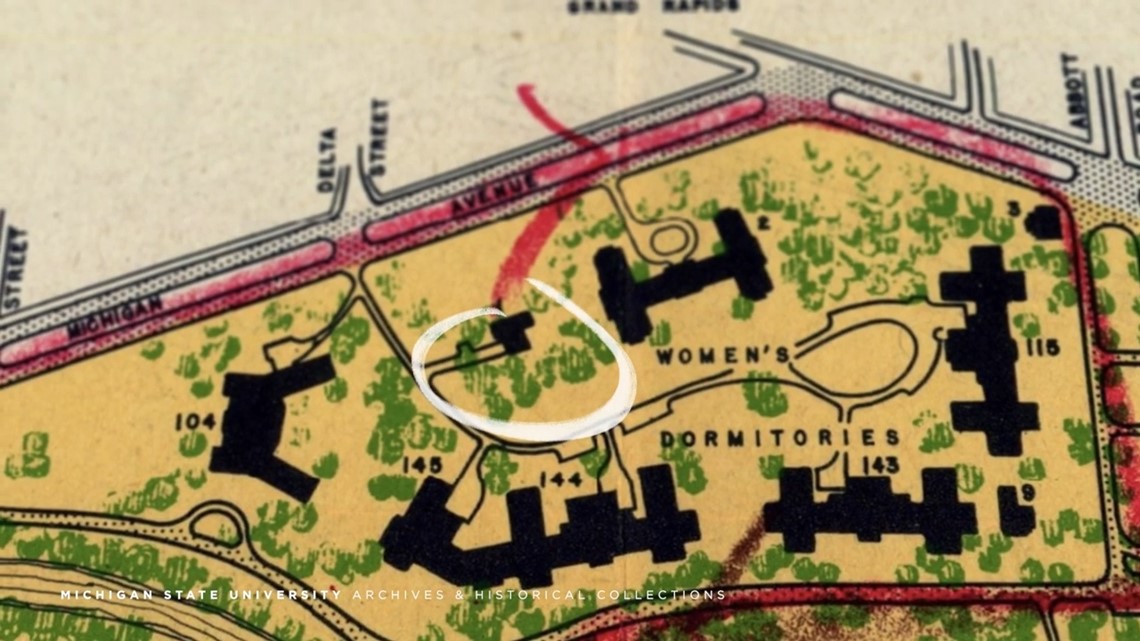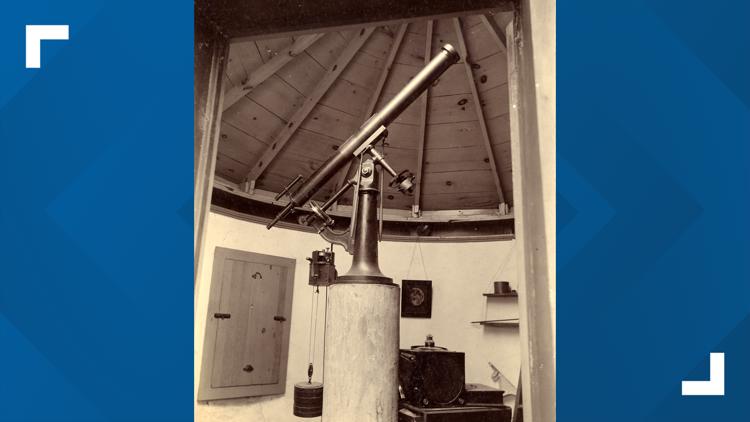EAST LANSING, Mich. — A nearly 150-year-old observatory was discovered earlier this summer on the campus of Michigan State University.
The initial discovery was made by workers who were installing hammock posts near Mayo Hall on West Circle Drive in East Lansing. While driving the poles into the ground, the workers hit a hard surface under the ground.
The workers contacted MSU's Campus Archaeology Program (CAP) to check out the site and see if there had been a building there in the past.
Archaeologists from the university investigated the area and researched historical maps of the campus and determined that the workers discovered the foundation of the first observatory on MSU’s campus, constructed in 1881.
The 142-year-old building was an exciting discovery for Ben Arkey, MSU campus archaeologist and anthropology doctoral student.
“It gives us a sense of what early campus looked like in the late 19th century,” said Akey. “The original campus observatory was built and used at a time when Michigan Agricultural College — what would become MSU — was a radically different institution with only a handful of professors and a relatively small student body.”


The Campus Archaeology Program works regularly with the university's Infrastructure Planning and Facilities Department (IPF) to ensure that the utmost care is taken when workers discover things like this on the campus.
“The campus archaeology program is designed to protect and mitigate our below ground heritage here at MSU,” said Stacey Camp, director of CAP and associate professor of anthropology at MSU, “We collaborate with IPF on construction projects and we are involved in preplanning stages to ensure that if they potentially hit an archaeological site, we can protect it in some manner.”
After further research, the CAP team learned that the observatory was originally built by Professor Rolla Carpenter, an 1873 graduate of Michigan State Agricultural College who returned to teach a variety of courses, including astronomy.
“In the early days of MSU’s astronomy program, Carpenter would take students to the roof of College Hall and have them observe from there, but he didn’t find it a sufficient solution for getting students experience in astronomical observation,” Akey said. “When MSU acquired a telescope, Carpenter successfully argued for funding for a place to mount it: the first campus observatory.”
Michigan State University 1880s observatory discovery
Students from multiple departments and colleges within the university all worked together to unearth and catalog finds at the dig site.
“Having students from majors outside anthropology gives us a different perspective on what we’re finding in the ground,” said Camp. “We feel really lucky to have a wide variety of knowledge on our dig sites.”
In 2024, CAP plans on having students earn credit while helping to excavate the foundation of the original observatory.
“Next summer, we’re planning to run an undergraduate archaeological field school where students can enroll for credit and get experience excavating the foundation of the first observatory on campus,” Camp said. “We anticipate having 18 to 20 students work on the project and get great experience doing archaeology.”
►Make it easy to keep up to date with more stories like this. Download the 13 ON YOUR SIDE app now.
Have a news tip? Email news@13onyourside.com, visit our Facebook page or Twitter. Subscribe to our YouTube channel.











